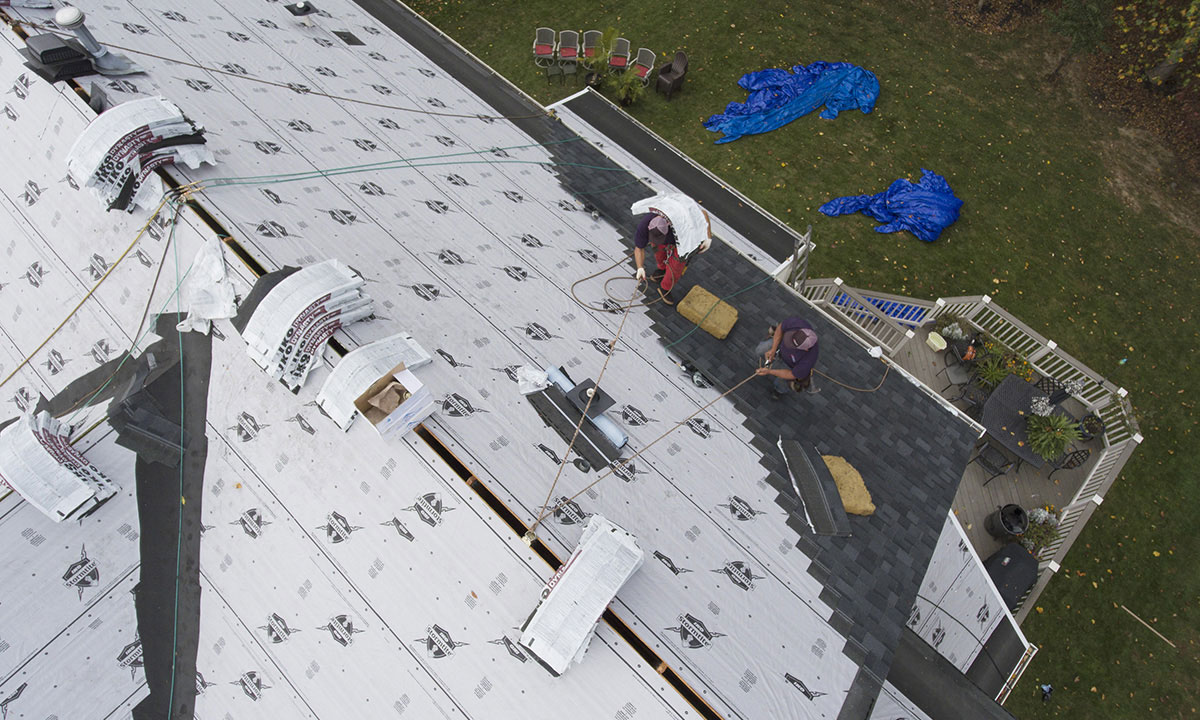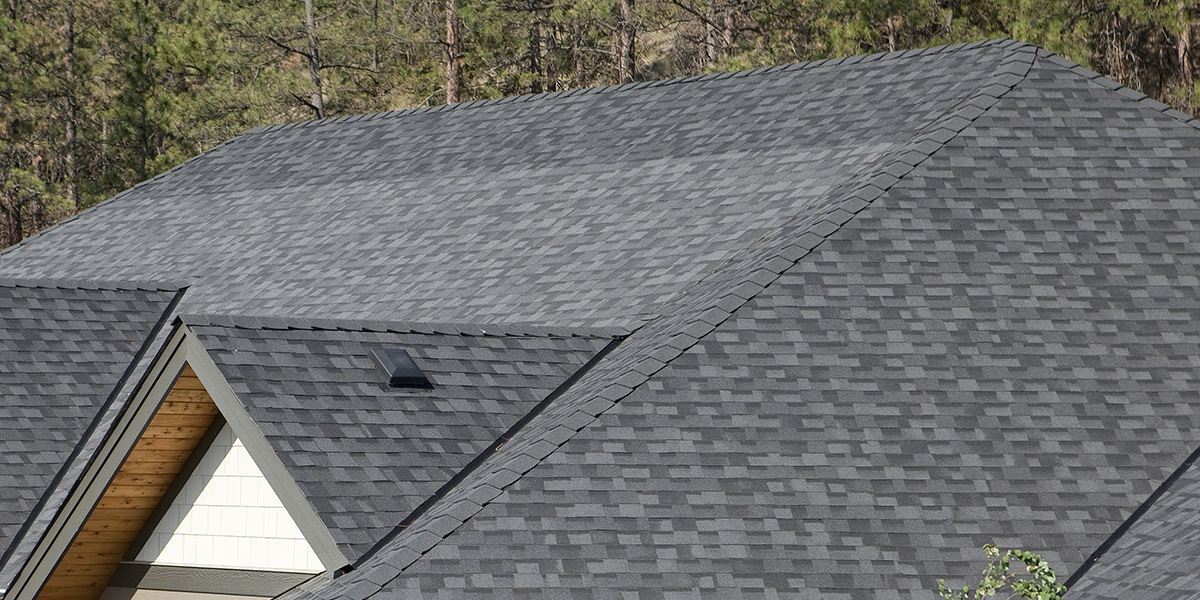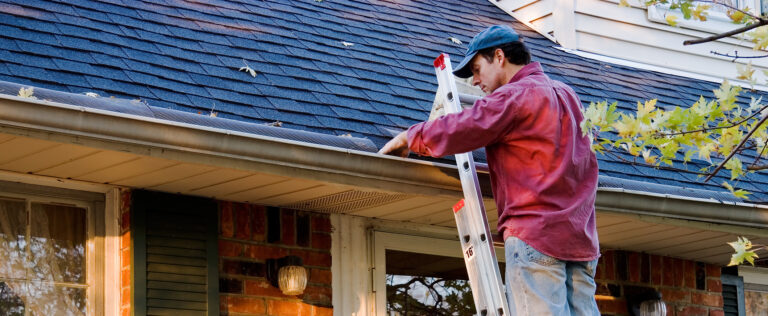Roofing DIY vs. Hiring a Professional: Why You Shouldn’t DIY Roofing Repairs
Table of Contents:
- Professionals Have Knowledge and Experience
- Liability and Insurance
- Limited Warranties
- Costs and Tools
- Time
- Safety Hazards
- Roofing DIY vs. Hiring a Professional
Do you enjoy DIY projects? There’s a certain satisfaction that come from fixing your home yourself. DIY projects can also save you some money. However, you may want to think twice before taking on a DIY roofing project. Unless you’re a professional roofer, you probably don’t have the equipment or knowledge you need for the job. You may end up making a dangerous or expensive mistake on your roof.

Your home DIY project may not meet your expectations. According to a survey of over 2,000 homeowners, more than half find their projects are more challenging and time‐consuming than they first anticipated. Though the survey included simple DIY projects, such as painting the walls and installing a backsplash, eight percent of homeowners still caused damage to their home during a DIY project. Further, 16 percent of homeowners injured themselves. The proportion of injuries and damages from DIY roofing projects is certainly higher.
In a way, roofing is similar to gardening. Those who haven’t tried it may think it’s quite simple. The first time they bring home a plant, they find that they need to do more than put it next to a window to help it thrive. The same is true of roofing. Professional roofers use equipment, training and experience to make their job look easy — but it isn’t.
There are several reasons to hire a professional over starting a DIY roof repair project.
1. Professionals Have Knowledge and Experience
Did you know that there are multiple layers of roofing materials below your shingles? A roof is a complex system with many different components and layers. All of these pieces work together and need to connect properly to direct water off the roof instead of into the home.
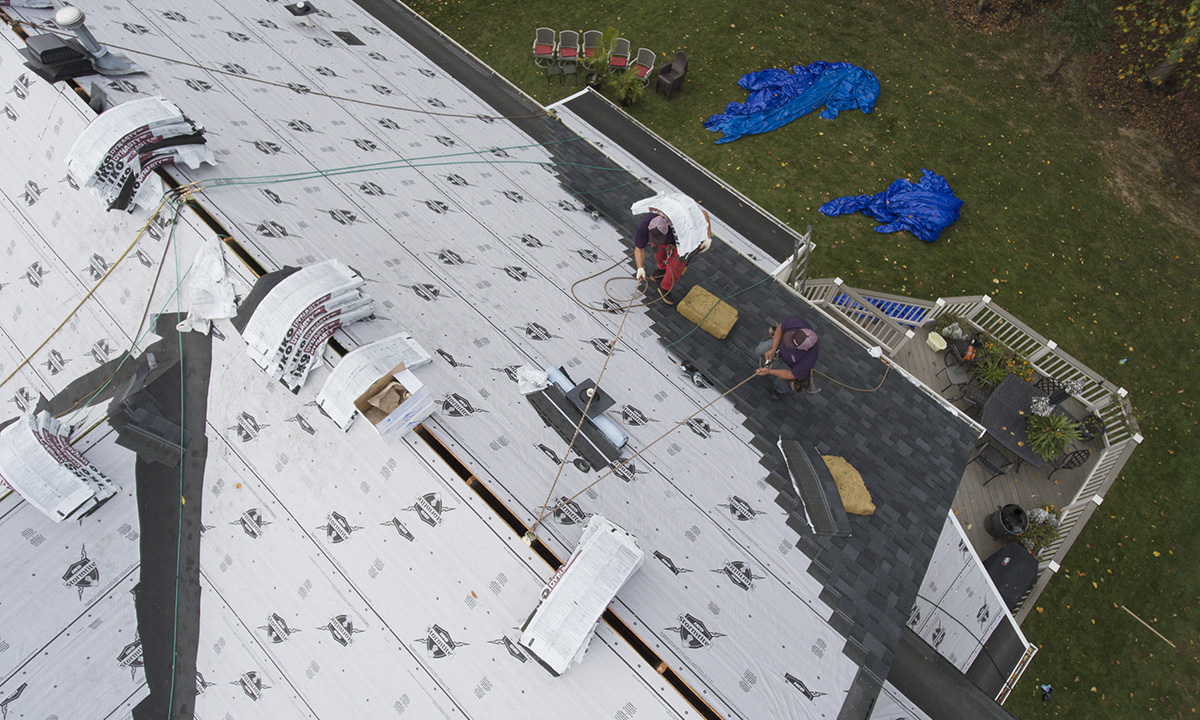
Professional roofers are trained to understand roof systems and to install their components properly. They have to consider both the manufacturer’s standards and the standards of their local building codes. In North America, your roofer may have to be certified by the state, province, or a roofing association before they can work on your roof. Some roofers will choose to get certified by a manufacturer as well, which may provide them with additional skill and experience.
This training allows professional roofers to protect your home from the weather in ways you may not even realize. For example, when a professional is on your roof fixing one problem, they may spot another that you would not have known to fix.
Can I Repair My Own Roof?
Homeowners can learn about their roof. However, you probably don’t have the time to learn everything you need to know to do a repair job. Even if you are replacing one shingle that has fallen off, many things can go wrong.
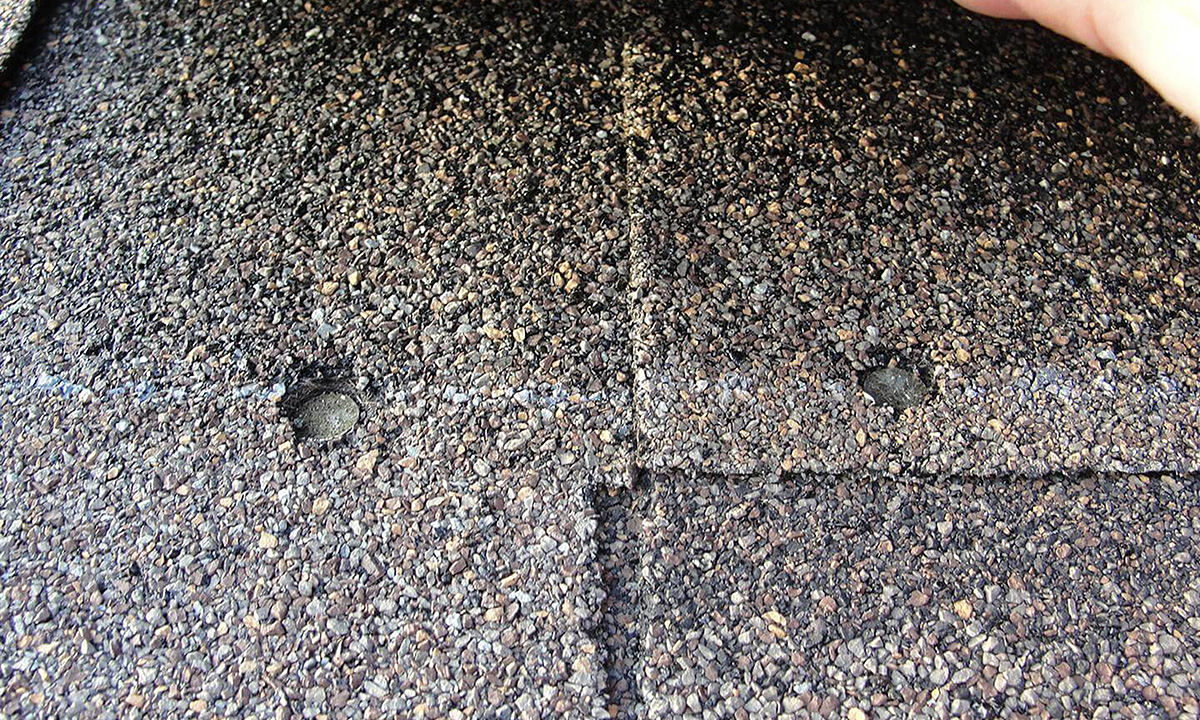
Perhaps you don’t know to pull back the shingles above the new shingle. Perhaps you leave the nail heads exposed to the elements, use the wrong nail size, place the nail incorrectly, or fail to drive it in properly. Commonly, homeowners fail to notice that the underlayment below the shingle also needs to be replaced. Any of these small mistakes could cause another leak.
It’s hard to understand just how involved roofing is without investing time in it. Think about the specialized knowledge you have in your own career. Would you expect a professional roofer to be able to pick up your career as a hobby and complete your job properly, in a weekend?
Aesthetics are Important
When a professional is working on your roof, they need to consider both the roof’s function and beauty. After all, your roof is a key part of your home’s curb appeal. It takes practice and skill to install a shingle roof that will look good, never mind one that could delight your potential buyers.
In order to receive the best results, a professional roofer will focus on properly applying the shingles based on the instructions provided by the roofing material manufacturer.
Consider the roof below, where someone has installed the wrong color shingles.
2. Liability and Insurance
Your home insurance will likely not cover any damage you do to your roof by walking on it or repairing it without proper knowledge and skill. When they deny your claim, your insurance company may argue that you were negligent when you tried to fix your roof yourself. If so, you will have to pay for the repairs out of pocket.
Professional roofers are much less likely to make mistakes. When they do, they typically have insurance that will cover any damage they may have caused to your roof, or other property. Reputable roofers will also return to fix any mistakes they made without charging you for their additional costs. By choosing a professional, you gain the protection of their insurance and you save yourself the hassle and expense of dealing with a denied claim.
Can Your Repair Your Own Roof on an Insurance Claim?
If a storm damaged your roof and your insurance company has already agreed to cover the cost of repairs, can you make those repairs yourself? The laws surrounding insurance claims are slightly different in each state and province. It is always best to confirm with a lawyer and your insurance company before you use the funds you received in your insurance claim.
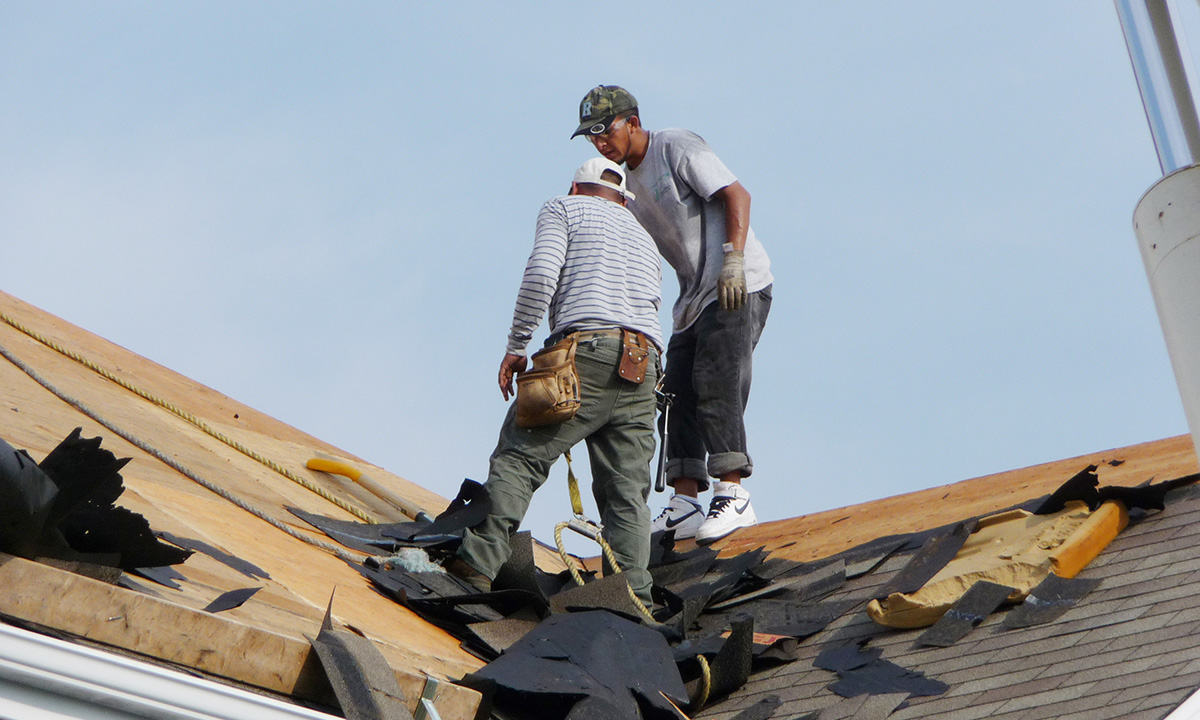
If you make a mistake when attempting to fix your own roof with your insurance policy pay out, your insurance company may deny any further claim. They may argue that by not hiring a professional roofer, you assumed the risk of your repairs. In the end, you may end up with a bigger roof problem than you started with and may not have any legal recourse to get the damage covered.
3. Limited Warranties
When you hire a professional roofer, you may be covered by two types of limited warranties: one from the roofer for labor and one from the shingle manufacturer for product defects. If you attempt DIY roof repair, you won’t be covered by the roofer’s limited warranty. Further, you’ll usually void your limited warranty from the manufacturer too.
Manufacturers require that their products be installed correctly, in accordance with their application instructions and applicable building code requirements in order to be eligible for limited warranty coverage. Professional roofers are best positioned to properly comply with these requirements.
Can Roof Repairs be Made by Homeowners?
You should also consider the damages you may cause to your roof by trying to fix your roof yourself. Even one improperly installed shingle can allow water beneath the shingles, which can do damage to every other layer of the roof, not to mention your home.

If you damage your roof, a professional cannot restore your warranty coverage. They may still choose to offer you a limited warranty on their own work. However, it may be challenging for you to take advantage of that guarantee, as they can always argue that your initial damage to the roof caused the underlying problem.
4. Costs and Tools
You may be considering DIY roofing because you hope it will save you some money. However, DIY roofing is unlikely to save you anything. Instead, it may end up costing you more money than hiring a professional would have. A small mistake that you make on your roof may end up costing you much more down the road in additional damages.
Even if all goes perfectly with your repair job, it will likely end up costing more than a professional’s work. Few homeowners can accurately estimate roofing jobs and may end up buying the wrong materials, or the wrong amount of materials.
In fact, you may have to buy more materials than you’ll need. Shingles are a prime example. If you only need five shingles for your repair job, you’ll have to buy many more in a shingle bundle. A professional roofer, on the other hand, can take the rest of the shingles from that bundle and put them to work on another roof. The same goes for nails, roofing cement and other roofing supplies.
Professional roofers also use tools that are expensive to buy or rent. A nail gun may be rented out for a hundred dollars a day. You may also have to rent an extension ladder, safety harness and safety helmet, and will need training for working at heights prior to going up on your roof. If you try to save money or time by not renting the proper safety equipment or getting the required safety training, you are putting your safety at even greater risk.
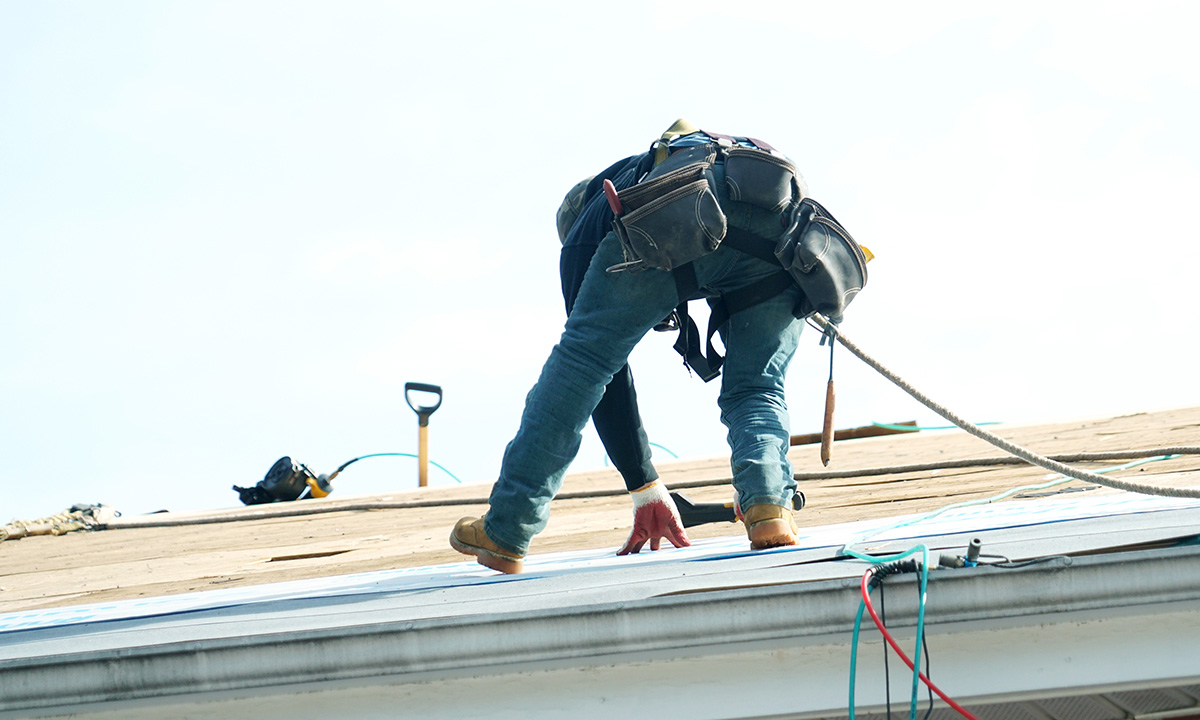
What to Do if You Can’t Afford Roof Repairs
If you can’t afford roof repairs, you should talk to a professional roofer instead of trying to repair your own roof. If you explain your situation, a roofer may be able to offer you cost savings. For example, it may be possible to save you the costs of a complete roof tear‐off by installing the new roof over your old one. Or, your roofer may offer financing options that can help you afford a new roof immediately.
If getting a new roof has become an emergency, your bank may also have options for you. They may offer loans for home improvements. Or you may be able to use a home equity line of credit (HELOC) to free up equity to make the repairs.
DIY Roofing may Reduce Your Home Value
DIY roofing can also cost you money when it comes time to sell your home. Home inspectors will notice damage and mistakes made in your roof. Few buyers will be interested in a home that needs extensive roofing, especially one that may no longer be covered by a limited warranty. Your DIY roofing repairs could lower your home value or simply make your home harder to sell.
5. Time
You may also underestimate how long it will take for you to complete your roof repairs. While a delay doesn’t matter much when you’re painting your front door or laying down tile, a roofing delay can cause issues.
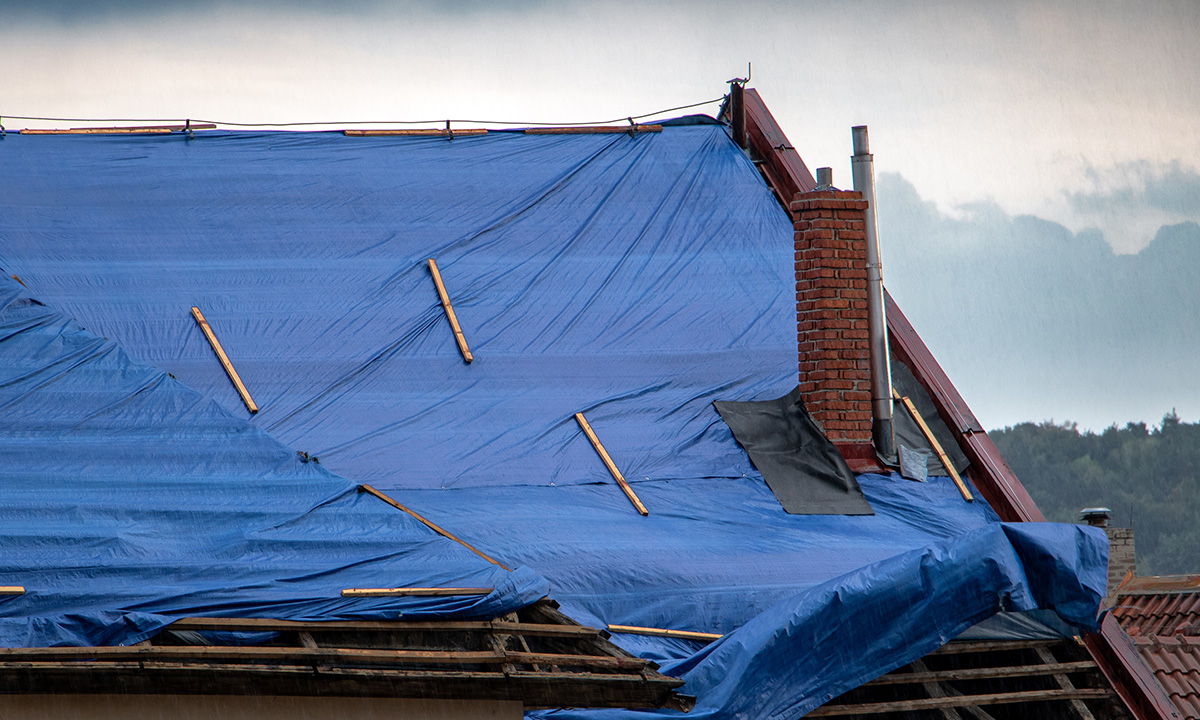
When you’re working on your roof, a part of it is exposed to the rain, wind and snow. Even if you cover your roof with a tarp, the elements may still damage your roof. It is essential to complete roof work efficiently to reduce your risk of damage. You can’t just leave it until next weekend if you don’t finish on time. Weather conditions can quickly change, and even sunlight exposure can damage some roofing materials.
A professional roofer will complete their work much faster than you would be able to, thereby reducing the roof’s exposure to the weather.
6. Safety Hazards
Roofing is dangerous work. According to the Bureau of Labor Statistics, 107 professional roofers died on the job in the U.S. in 2017. Despite mandated safety training and safety equipment, another 23,816 roofers suffered nonfatal injuries. The major risk, as you would expect, is falling off a ladder or off the roof. You are even more likely to be hurt while on a ladder or roof than a roofer. You may lack training for using a ladder or working at heights, and may also lack the proper safety equipment.
Is it Safe to Walk on my Roof?
The short answer is no. It is not safe to walk on your roof, especially if the roof needs repairs. There is always the possibility that you could fall off the ladder or the roof. Each year, many people visit the emergency room or die after falling from a ladder. In fact, many homeowners fall from ladders because they do not know how to hang Christmas lights safely.
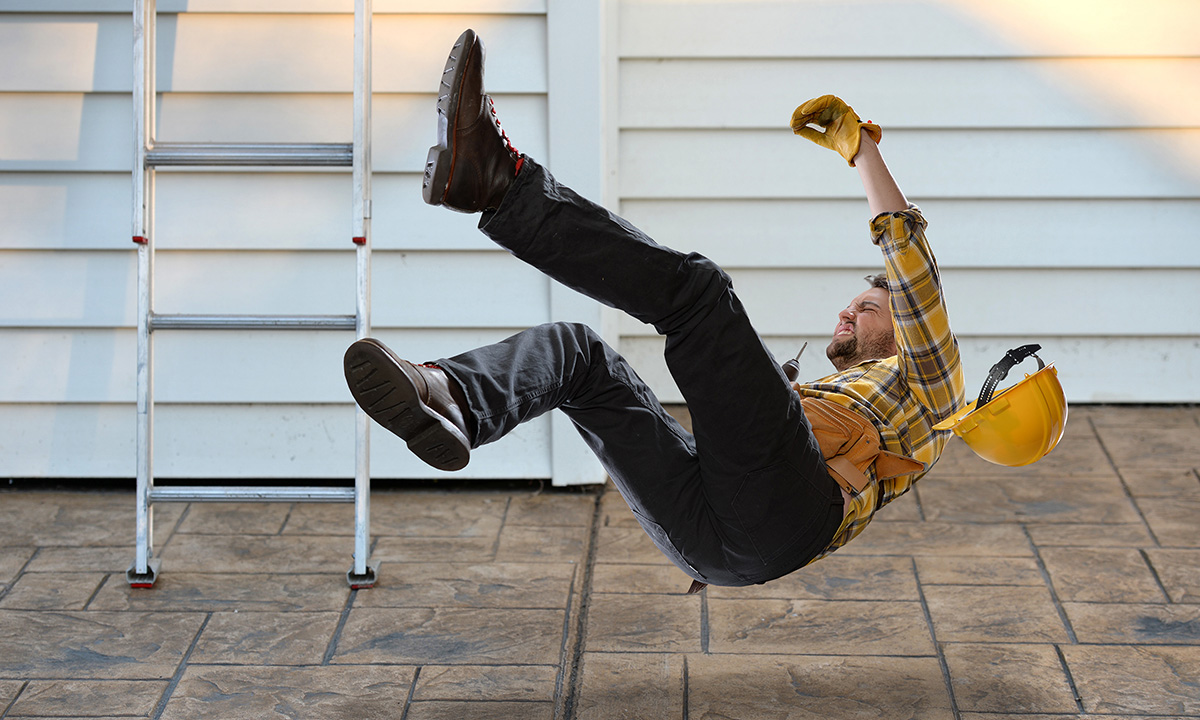
If you understand ladder safety and are comfortable working at heights, you may still underestimate the risks of carrying equipment up the ladder or the risk posed by poor weather conditions. Shingle bundles are heavy. Other roofing materials, such as plywood, catch the wind and can knock you off balance. The results can be tragic. Just last year, a 24‐year-old Pittsburgh man slipped on frost that had developed on his rooftop and fell to his death.
Walking on a roof may also damage the roof. You may step in the wrong place, wear the wrong shoes or walk too heavily. For example, it’s best practice to avoid walking in the roof’s, as it is one of the most vulnerable areas of the roof. If you’re not properly trained, walking on a roof could cause a more serious issue than the one you are attempting to fix.
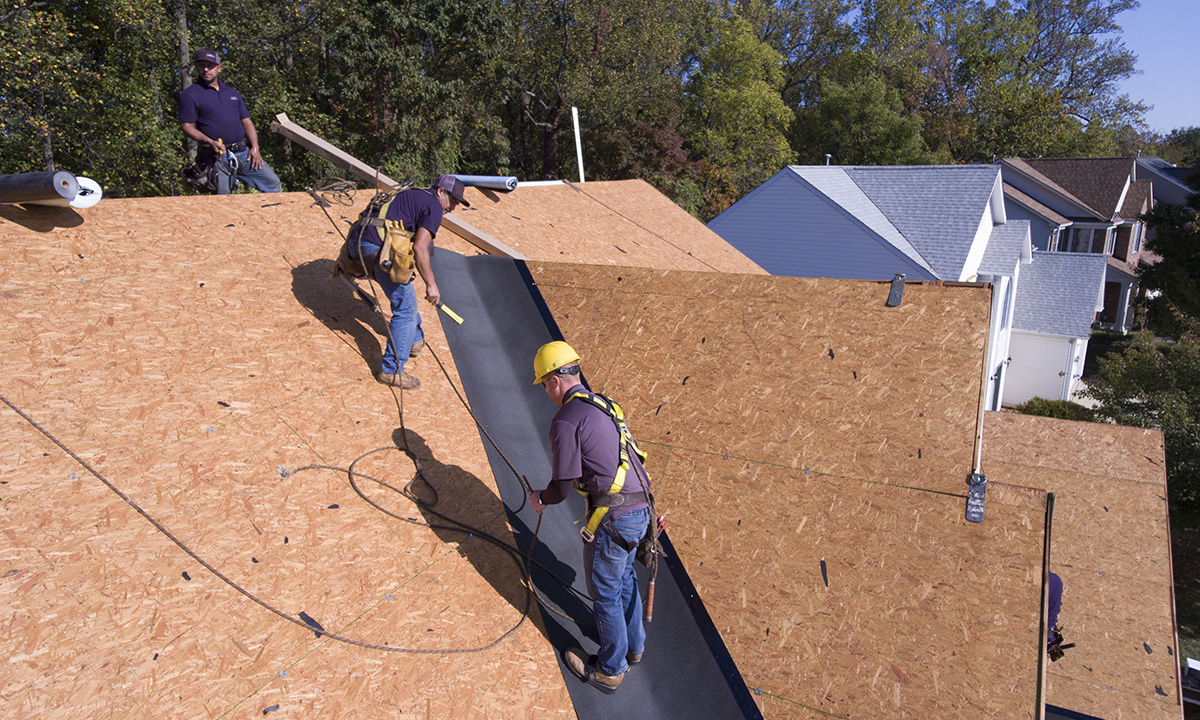
If your roof has suffered water damage, walking on it is even more dangerous. Small roof leaks can cause structural damage to the roof by rotting out supports. If the leak has gone unnoticed for some time, it is more likely to have caused structural damage.
If you step on an unsupported portion of the roof, you could fall through and suffer serious injury. Such a fall will also damage your home. It is much safer to let professional roofers take these risks, as are trained to see warning signs that the roof may be unsafe and have the proper safety equipment to catch them if the roof does collapse.
Other DIY Roof Safety Hazards
Falling is not the only safety risk you might face when attempting DIY roof repair. Few homeowners know how to use the specialized equipment that professional roofers use.
Nail guns are just one example. It’s possible to nail your hand to the roof with a nail gun. They shoot nails with significant force. A nail gun’s pressure needs to be carefully monitored. Especially if it is set to high pressure, a nail gun may do serious damage to anything or anyone who gets in the way.
Another important example is fall protection equipment. Purchasing safety equipment does not teach you how to use it. Wearing an improperly secured safety harness is just as dangerous as being on the roof without one.
Also, improper roof repairs may create unsafe conditions in your home, including serious leaks.
Roofing DIY vs. Hiring a Professional
Overall, it’s wisest to hire a professional roofer instead of attempting DIY roof repair. If you try to repair your own roof, you risk damaging it and the rest of your home. You may also void your warranty and end up costing yourself much more than if you had hired a professional roofer in the first place. Unlike many DIY home projects, DIY roofing isn’t safe, cost‐effective or simple.
If you wish to be more informed about what your roofer will be doing on your roof, you can always ask them questions. A reputable roofer should happily explain to you what’s ailing your roof and how they plan to fix it. Plus, IKO offers many resources that can help you learn about your roof.
If you need roofing work done, use our Contractor Locator to find a reputable roofer in your area.
